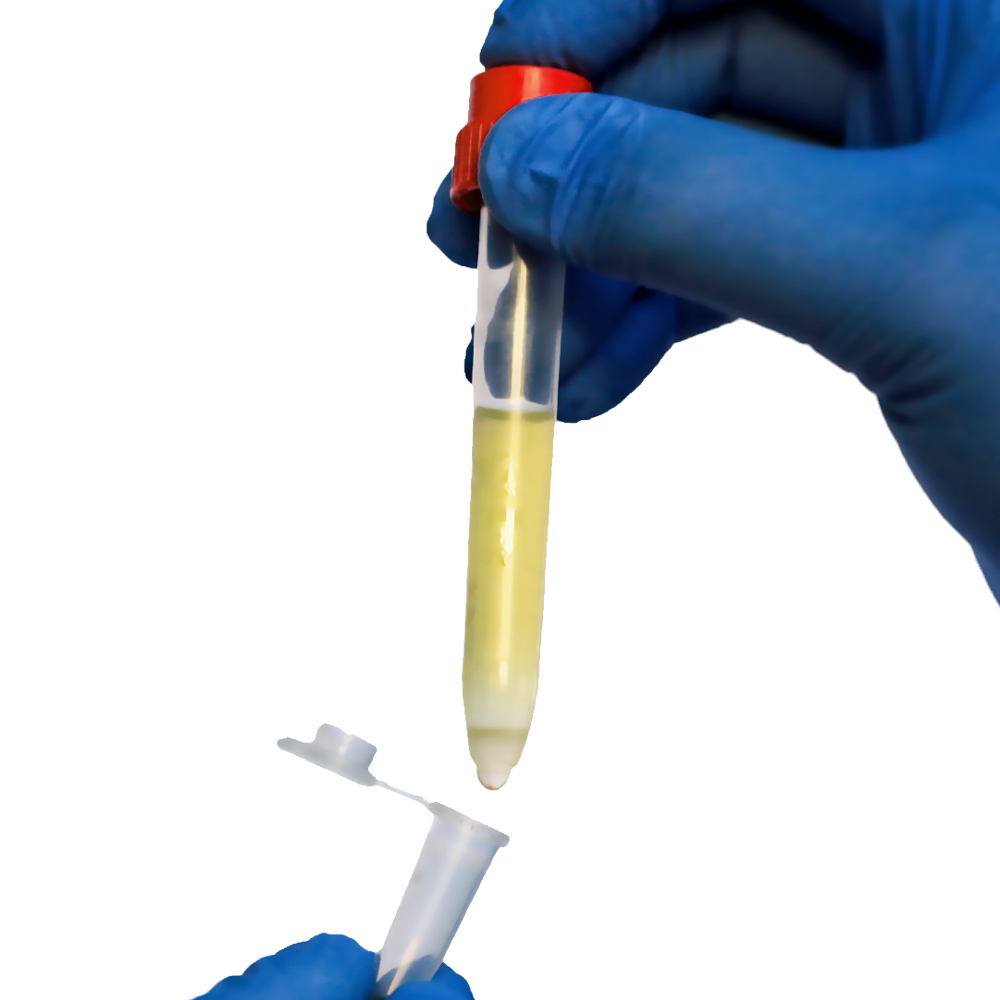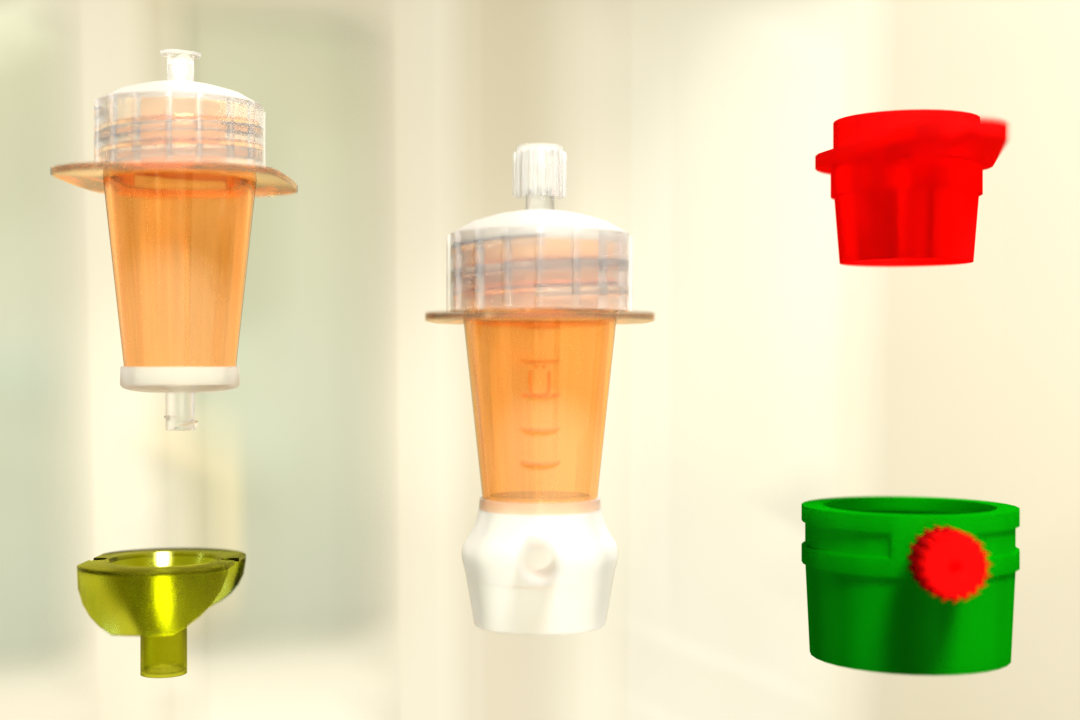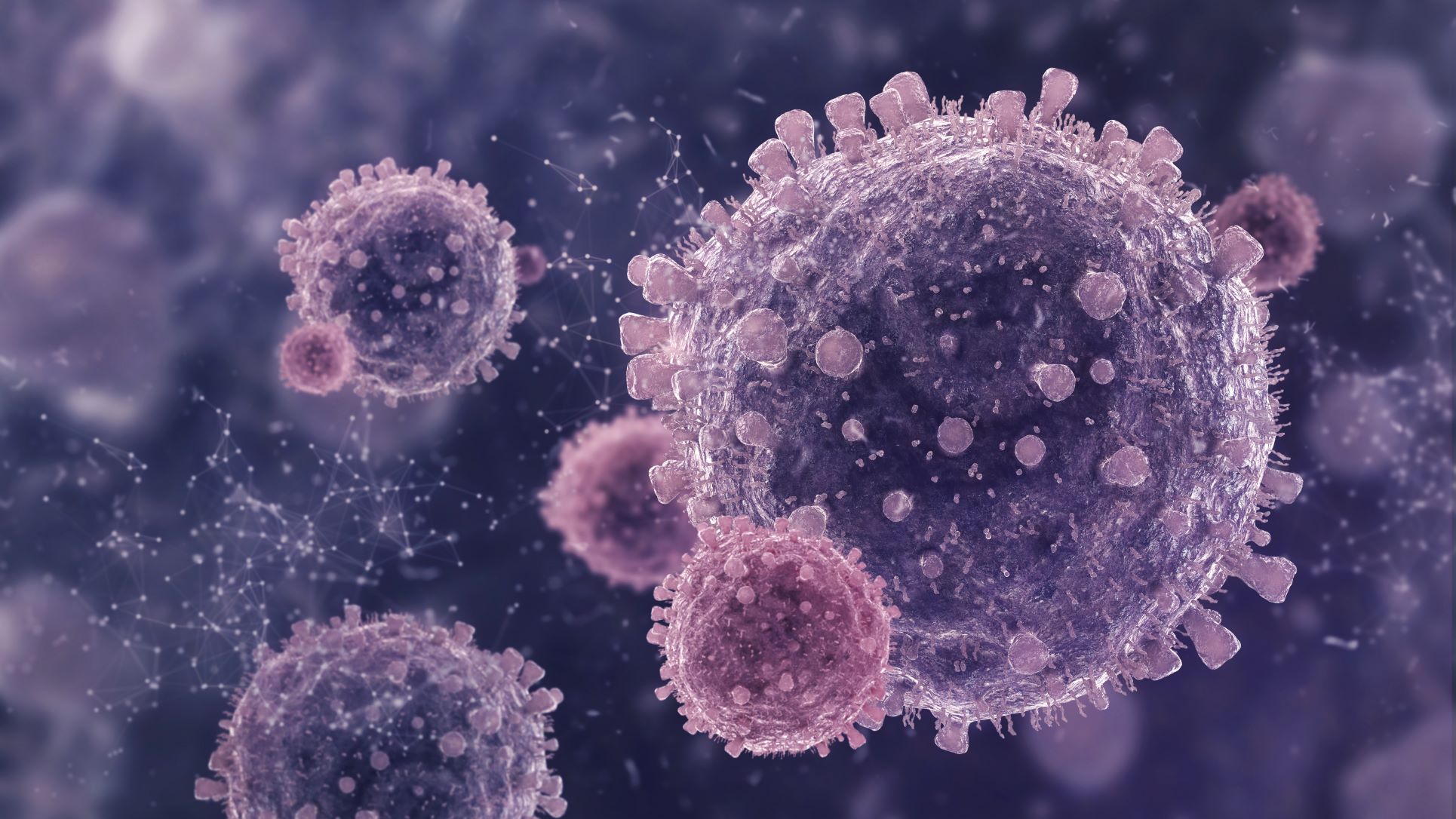Microplastic research has grown rapidly over the last decade, driven by global concerns about environmental contamination, ecosystem health, and the long-term impact of plastic particles on food and water safety. As researchers analyze rivers, oceans, wastewater, soil, and biological samples for microplastic content, they face an increasing need for reliable tools that support high-volume, high-throughput filtration. This is where the pluriStrainer Maxi stands out.
Designed for processing volumes ranging from 100 mL to more than 10 liters, the pluriStrainer Maxi combines simplicity, efficiency, and adaptability, making it a powerful tool for microplastic studies. With 13 mesh sizes from 5 µm to 2,000 µm, compatibility with GL45 laboratory bottles, optional adapters for GL32 and GL80, and stackable features that support cascade straining, it offers a level of versatility that is difficult to match.
For researchers working with particle separation techniques, cell enrichment techniques, environmental testing workflows, or even teams accustomed to using Lab Cell Strainers in biological contexts, the pluriStrainer Maxi offers a smooth transition into microplastic analysis. In fact, many teams describe it as one of the best Lab Cell Strainers for large-volume environmental applications—even though its use extends far beyond traditional biological filtration.
This article explores in depth why the pluriStrainer Maxi has become essential for microplastic research workflows, how it improves efficiency and reproducibility, and how its unique features support reliable particle filtration for small and large microplastic fractions.
Understanding the Demands of Microplastic Research
Microplastic analysis often begins with large sample volumes. Coastal researchers may collect multiple liters of seawater in a single haul. Wastewater treatment plants may analyze effluent in bulk. Environmental monitoring bodies may process liters of river or lake water daily. Even soil or sediment suspensions require repeated washing, settling, and filtering steps to isolate plastic particles.
These large volumes include a mixture of organic matter, minerals, fibers, dust, and various contaminants. To separate microplastics effectively, researchers must combine dependable filtration tools with particle separation techniques that remove unwanted fragments while preserving the plastic particles of interest.
Standard laboratory strainers, especially small units designed for cell biology (like a typical cell strainer 40 µm or cell strainer 70 µm), cannot reliably handle multi-liter environmental samples. Not only are they prone to clogging, but they also require repeated manual transfers between containers—a process that increases handling time, contamination risks, and user fatigue.
Microplastic workflows demand tools that support:
- High-volume sample filtration
- Accurate size-based separation
- Sequential cascade straining
- Compatibility with vacuum or low-pressure systems
- Reliable handling across different mesh sizes
The pluriStrainer Maxi meets all these requirements and adds multiple advantages that streamline every step of the workflow.
Why Mesh Size Variety Matters in Microplastic Analysis
Identifying microplastics requires isolating different particle size ranges. Researchers often try to capture microplastics in categories such as:
- > 1,000 µm
- 500–1,000 µm
- 100–500 µm
- 20–100 µm
- < 20 µm
Because microplastics can be diverse—fibers, beads, fragments, films, granules—using flexible mesh options is essential.
The pluriStrainer Maxi is available in 13 mesh sizes, enabling precise particle filtration. From large fragments down to particles as small as 5 µm, researchers can structure filtration in a way that ensures each size fraction is collected consistently.
This makes the pluriStrainer Maxi particularly valuable for teams studying:
- Microplastic distribution in marine water
- Particles in freshwater or wastewater
- Plastic fibers released from textiles
- Soil and sediment particle mixtures
- Microplastics ingested by organisms
- Industrial runoff
The mesh sizes are color-coded, making it easy to identify and organize filters when building a strainer cascade. Instead of mixing mesh sizes or relying on manual labels, researchers can create efficient workflows that reduce guesswork and human error.
High-Volume Filtration Without Workflow Bottlenecks
Processing multi-liter environmental samples using traditional Lab Cell Strainers is extremely slow. Even the best Lab Cell Strainers designed for biological applications cannot handle such volume efficiently. They clog faster, require multiple transfers, and create long interruptions that reduce throughput.
The pluriStrainer Maxi eliminates these problems in several ways:
1. Large Filtration Capacity
The pluriStrainer Maxi supports filtration of more than 10 liters in a single setup, removing the need to split samples across multiple devices. This high-volume capacity helps researchers process full environmental or water samples at once, improving consistency and saving valuable lab time.
2. Fast Flow Rates
Its high-flow channel system keeps liquid moving quickly through the mesh, even when handling dense or debris-rich samples. Unlike standard Lab Cell Strainers built for small volumes, the pluriStrainer Maxi maintains steady flow, reducing delays and preventing common bottlenecks caused by clogging or slow drainage.
3. Low-Pressure Compatibility
Researchers can attach a low-pressure system to the built-in port, allowing the filtration process to move faster without damaging sensitive particles. This pressure-assisted setup is especially useful for microplastic work, where maintaining the physical integrity of recovered particles is essential for accurate downstream analysis.
4. Automated Refilling
The dedicated lid supports automated refilling by pulling sample material directly from the container into the strainer. This removes the need for repeated manual pouring, reduces spill risks, and keeps the filtration process continuous, especially when processing multi-liter samples over extended periods.
5. Funnel Integration
For samples containing high organic load or thicker suspensions, the optional funnel gives users more control over how material enters the strainer. It increases the working volume and prevents overflow, making it easier to manage challenging samples without slowing down the overall filtration process.
Together, these features dramatically reduce the time spent on sample processing. Instead of waiting for gravity flow alone, researchers can rely on airflow-assisted filtration to increase throughput.
The Role of Cascade Straining in Microplastic Research
Cascade straining is a core process in microplastic analysis because different microplastic sizes cannot be isolated in a single step. In many workflows, samples move through a downward sequence of mesh sizes to remove particles step-by-step.
For example, a strainer cascade may include:
- 1,000 µm
- 500 µm
- 100 µm
- 40 µm
- 20 µm
Each mesh catches specific particles while allowing smaller ones to pass to the next level.
The pluriStrainer Maxi is particularly well suited for cascade straining because:
Designed for stackability
The pluriStrainer Maxi can be stacked vertically, allowing researchers to combine multiple mesh sizes into a single, organized filtration tower. This design supports true cascade straining, where each layer handles a specific particle range without needing separate equipment or repeated manual setup steps.
Multiple Maxi devices can be stacked vertically
By stacking several pluriStrainer Maxi units, labs can align meshes from large to small in one structure. This creates a direct pathway for sequential filtration, enabling smooth progression of particles through each level and eliminating the disruptions caused by individual, single-use strainers.
Reduces contamination risks
Keeping the entire cascade inside one connected system reduces exposure to open air, benchtop surfaces, or additional containers. Fewer handling steps mean fewer opportunities for dust, fibers, or other microscopic contaminants to enter the sample, which is crucial for accurate microplastic research.
Increases reproducibility.
Consistent workflows are essential for environmental monitoring and long-term research. The pluriStrainer Maxi’s standardized mesh sizes and stackable design ensure the same separation sequence can be repeated across different sampling cycles, improving the reliability and comparability of size-based microplastic data over time.
Shortens workflow time.
A stacked cascade allows samples to pass through all required mesh sizes in a single run, eliminating the repeated transfers normally needed between separate strainers. This continuous flow significantly speeds up processing, especially for large environmental samples containing multiple particle size fractions.
Cascade straining is also valuable in cell enrichment techniques and particle separation techniques, making the pluriStrainer Maxi a multi-purpose tool that transitions easily across different research areas.
Adaptability for Diverse Research Environments
Microplastic analysis doesn’t only take place in large, well-equipped labs. Many environmental teams work in:
- Outdoor field stations
- Onboard research vessels
- Small regional testing labs
- University teaching laboratories
- Mobile water-testing units
Equipment must therefore be portable, durable, and easy to use even in limited spaces.
The pluriStrainer Maxi offers several advantages in these contexts:
GL45 Standard Bottle Compatibility
The strainers fit standard GL45 laboratory bottles, which are used worldwide. This makes sample storage and filtration easier.
Adapters for GL32 and GL80
With adapters, researchers can use different bottle formats without buying specialized equipment.
Compact Stackability
Even when working in tight quarters, stacking strainers vertically saves bench space.
Sterile, Color-Coded Components
Maintaining cleanliness and preventing cross-contamination is easier when components are pre-sterilized and easy to identify.
These features are especially beneficial for marine field researchers, who often need quick, dependable filtration tools while working at sea.
Improving Sample Integrity and Reducing Contamination
Sample purity is critical in microplastic analysis. Contamination can come from:
- Clothing fibers
- Handling equipment
- Dust from the air
- Plastic lab consumables
- Water used for rinsing
Using the pluriStrainer Maxi helps reduce these risks because:
- Samples require fewer open handling steps
- Automated refilling limits exposure to air
- Low-pressure filtration reduces the need to manipulate the sample manually
- Stackable strainers keep the workflow enclosed
- Color-coded mesh sizes prevent accidental mix-ups
By improving sample integrity, the pluriStrainer Maxi makes microplastic analysis more trustworthy, especially when determining pollution levels for regulatory or policy decisions.
Enhancing Efficiency for Large Research Teams
Large environmental organizations, universities, and governmental research programs often handle hundreds of samples per week. In such cases, efficiency is not just helpful—it is essential.
The pluriStrainer Maxi helps teams manage high workloads thanks to:
- Fast flow rates
- Large throughput capacity
- Fewer cleaning and disassembly steps
- Quick mesh identification via color coding
- Compatibility with automation
With the increasing demand for microplastic research in environmental monitoring, wastewater treatment quality control, and marine conservation, the pluriStrainer Maxi becomes an important asset for keeping up with sample volume demands.
Supporting Particle Filtration Across Multiple Research Fields
Although microplastic research is the primary focus of this article, it is worth noting that the pluriStrainer Maxi also supports:
- Cell culture filtration
- Cell cluster enrichment
- Spheroid separation
- Media and buffer filtration
- Additive removal
- Agricultural water testing
- Food and beverage sample filtration
This multi-disciplinary range is why many consider it among the best Lab Cell Strainers for large-volume workflows.
Researchers familiar with cell separation technology and the density gradient centrifugation principle will also find the pluriStrainer Maxi beneficial for pre-filtering dense samples before centrifugation steps.
Why pluriStrainer Maxi Is Ideal for Microplastic Research
To summarize its essential role, the pluriStrainer Maxi supports microplastic testing by delivering:
1. High-volume filtration capacity
Capable of filtering >10 liters without strain.
2. Mesh size flexibility
Thirteen mesh sizes for accurate particle separation.
3. Support for cascade straining
Stackable system ideal for multi-step workflows.
4. Improved sample integrity
Less handling means less contamination.
5. Increased workflow speed
High-flow channels and low-pressure compatibility reduce delays.
6. Broad compatibility
Fits GL45 bottles and adapts to GL32 and GL80.
7. Reliable performance for diverse research setups
From marine labs to academic facilities, it performs consistently everywhere.
These strengths make the pluriStrainer Maxi indispensable for researchers tracking microplastics in global environments.
Conclusion
Microplastic research demands dependable tools that can handle large sample volumes, maintain sample integrity, and support accurate size-based separation. The pluriStrainer Maxi offers a complete solution, providing the mesh variety, filtration capacity, and stackability needed to support complex workflows such as cascade straining and particle enrichment.
Its design improves efficiency, reduces contamination risks, and supports flexible use across different research settings. Whether processing seawater, river samples, sediment suspensions, or wastewater effluent, the pluriStrainer Maxi enables fast and reliable microplastic isolation.
With its 13 color-coded mesh sizes, compatibility with standard laboratory bottles, high-flow channel design, and optional low-pressure support, it delivers the perfect balance of practicality and precision. For researchers who depend on accurate filtration and reproducible results, the pluriStrainer Maxi is more than a helpful tool—it is an essential part of modern microplastic research workflows. Its ability to integrate into existing laboratory setups makes adoption effortless. The device also supports long-term studies by offering consistent, repeatable performance across multiple sampling cycles. Researchers can easily scale their workflows by selecting the mesh sizes that match their project needs. As microplastic research continues to expand, tools like the pluriStrainer Maxi will play a key role in improving data quality and workflow reliability.
 English
English French
French
 German
German
 Spanish
Spanish
 Belgium
Belgium
 Italian
Italian Brazil
Brazil Chinese Mandarin
Chinese Mandarin




